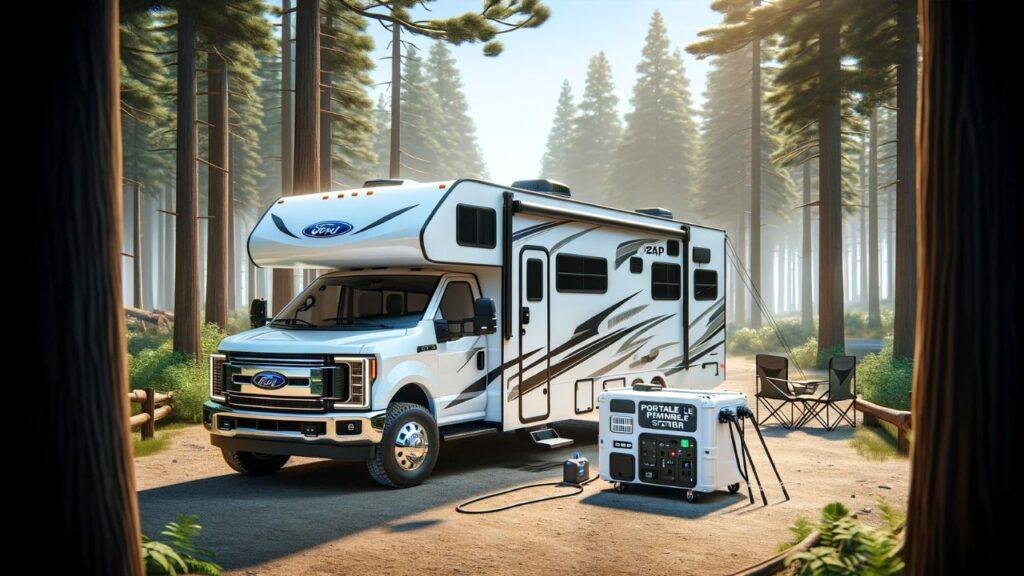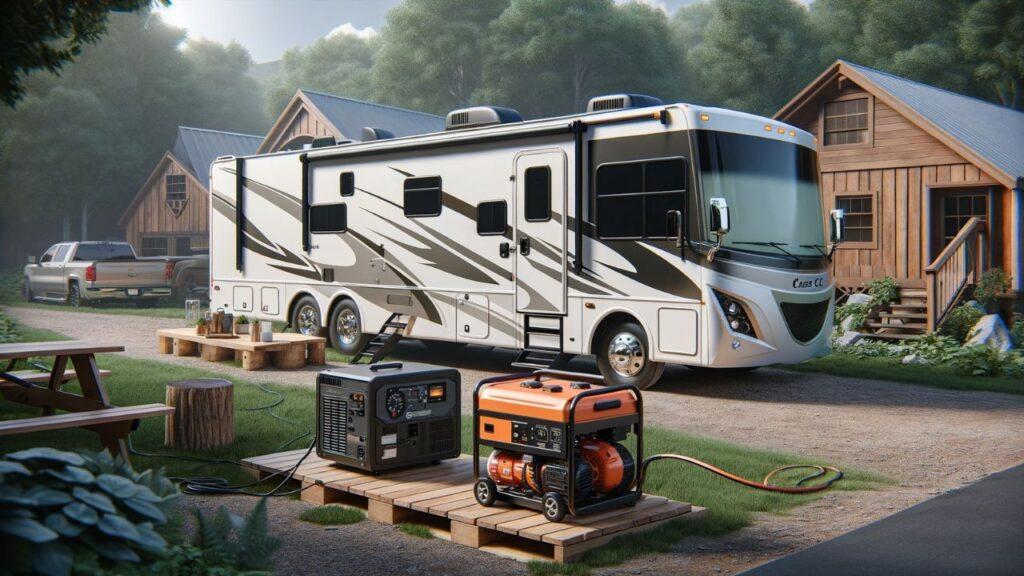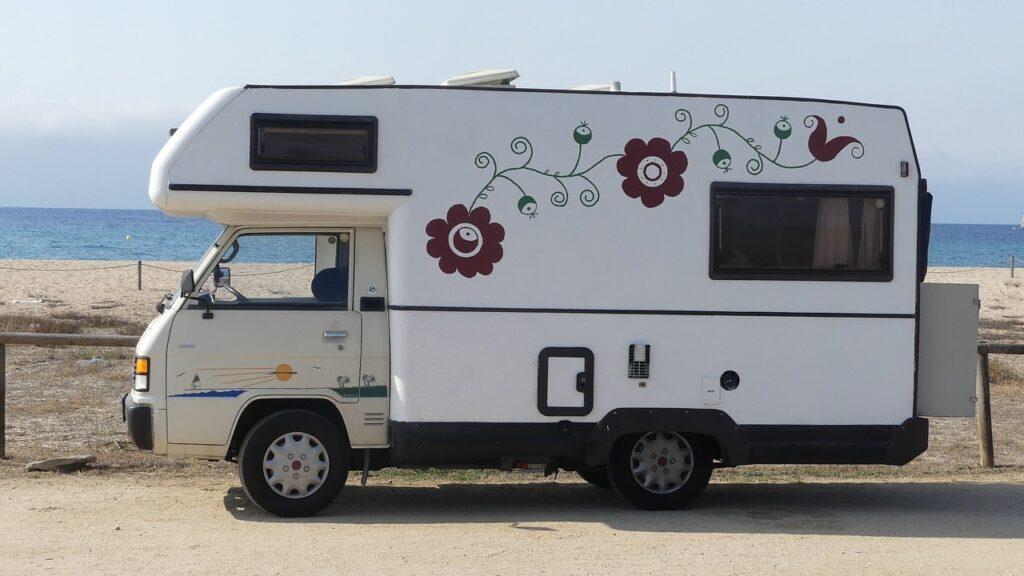
If you’re like me, you know there’s nothing better than waking up in your RV, coffee brewing, and the promise of adventure ahead. But nothing puts a damper on the day quite like low water pressure or a clogged hose. So the big question comes, how to avoid calcium buildup in your rv hose?
After years on the road, I’ve learned that calcium buildup in RV hoses is one of the sneakiest—and most annoying—problems you can face.
Hard water is often to blame, leaving behind stubborn mineral deposits that clog hoses, slow water flow, and lead to expensive repairs if ignored.
The good news? Preventing buildup isn’t complicated. In this article, I’ll share five simple tricks that have kept my RV’s water system running like new, no matter where I park.
What Causes Calcium Buildup in RV Hoses?
Calcium buildup in RV hoses happens when hard water leaves behind mineral deposits, like calcium and magnesium, as it flows through your plumbing. Over time, these deposits harden and block water flow, causing pressure problems and potential damage.
Here’s why it’s a common headache for RVers:
- Hard Water Hotspots – Many campgrounds rely on well water, which tends to be mineral-rich.
- Heat Accelerates Buildup – Warm weather or hot water use speeds up the deposit process.
- Stagnant Water – Hoses left with standing water can develop buildup even faster.
- Frequent Use – The more water you use, the more minerals get deposited.
Common Signs of Buildup
You don’t need to be a plumber to spot the signs of calcium buildup. If you notice any of these issues, it might be time to take action:
- Low Water Pressure – Weak flow from faucets or showerheads.
- White or Chalky Residue – Mineral deposits around hose connections or faucets.
- Hard, Stiff Hoses – Hoses that feel rigid or brittle instead of flexible.
- Clogged Fixtures – Faucets or showerheads with slow or uneven water output.
- Streaks and Spots – Hard water stains on dishes, shower doors, or sinks.
How to Avoid Calcium Buildup in RV Hose
Here’s how to avoid calcium buildup in your RV hose:
- Use an Inline Water Filter – Traps minerals like calcium and magnesium before they enter your hose.
- Install a Portable Water Softener – Softens hard water, preventing mineral deposits and buildup.
- Flush and Drain Hoses Regularly – Clean hoses with a vinegar and water solution to dissolve deposits.
- Clean Hose Connections and Fixtures – Soak parts in vinegar to remove stubborn calcium buildup.
- Test Water Hardness Before Hooking Up – Use test strips to check water quality and prepare accordingly.
1. Use an Inline Water Filter
An inline water filter is one of the easiest ways to stop calcium buildup before it even starts. It attaches directly to your water hose, filtering out minerals and impurities before they enter your RV’s plumbing system.
- Why It Works – Filters remove calcium and magnesium particles, reducing the risk of deposits.
- What to Look For – Choose a filter with a high micron rating to catch smaller particles and improve water quality.
Pro Tip – Replace your filter every 3–6 months, or sooner if you’re parked in areas with extra-hard water.
2. Install a Portable Water Softener
I’ll be honest—investing in a portable water softener changed the game for me. It’s a bigger upfront cost, but it’s saved me from endless cleaning and hose replacements.
- How It Helps – Water softeners remove calcium and magnesium ions, turning hard water into soft water.
- Key Benefits – Prevents buildup, protects hoses and fixtures, and improves soap lather for cleaning and showers.
Quick Tip – Look for compact, RV-friendly softeners that are easy to set up and maintain.
3. Flush and Drain Your Hoses Regularly
Even with filters and softeners, it’s smart to give your hoses a good flush now and then. I make it a habit to clean mine after every trip.
Steps to flush your hose:
- Detach the hose and drain any leftover water.
- Fill the hose with a vinegar and water mix (1:1 ratio).
- Let it soak for a few hours, then rinse thoroughly with clean water.
- Store the hose in a dry place to prevent moisture buildup.
Bonus Tip – Use a hose cap to keep dirt and debris out while it’s in storage.
4. Clean Hose Connections and Fixtures
Even with the best prevention methods, calcium can sneak into connectors and fixtures. A quick vinegar soak can help break up stubborn deposits.
How to do it:
- Detach the connectors or showerheads.
- Soak them in white vinegar overnight.
- Scrub any remaining residue with a brush or sponge.
- Rinse thoroughly before reattaching.
Pro Tip – For non-removable fixtures, wrap a vinegar-soaked rag or plastic bag around them and let it sit overnight.
5. Test Water Hardness Before Hooking Up
One thing I’ve learned on the road is that water quality changes from place to place. Testing the water at a new campground can save you a lot of headaches.
- How to Test – Use inexpensive water hardness test strips, available online or at hardware stores.
- Why It Helps – Knowing if the water is hard lets you decide whether to connect a filter, softener, or both before using it.
Additional Tips for Managing Hard Water in Your RV
Hard water is a common issue for RVers, but a few extra precautions can make a big difference in keeping your plumbing in top shape. Here are some tips I’ve picked up along the way:
- Test the Water Before Hooking Up – Use test strips to check water hardness at campgrounds and prepare accordingly.
- Keep a Spare Inline Filter – Hard water can clog filters quickly, so having an extra one on hand is always a smart move.
- Flush Your System Regularly – Run a vinegar rinse through your plumbing every few months to break down any lingering buildup.
- Inspect Hoses and Fixtures Often – Catching buildup early can save you from bigger repairs later.
- Store Hoses Properly – Drain and dry hoses before storage to prevent stagnant water and mineral deposits.
Conclusion
Calcium buildup in RV hoses is one of those sneaky problems that can turn into a major headache if left unchecked. After spending years on the road, I’ve learned that preventing buildup is much easier than dealing with clogs and low water pressure later.
Simple steps like using a water filter, installing a portable softener, flushing hoses regularly, and cleaning fixtures can save you time, money, and stress.
Whether you’re parked for the weekend or living full-time in your RV, keeping your water system clean means fewer hassles and more time enjoying the open road.
FAQs
How often should I clean my RV hose?
I recommend cleaning it at least once every couple of months or after every long trip—especially if you’ve been in hard water areas.
Do I really need a water softener for my RV?
Not everyone does, but if you travel in areas with hard water, a softener will save you time, money, and hassle in the long run.
Can I use bleach instead of vinegar to clean my hose?
Vinegar is safer and won’t damage the hose, while bleach can weaken the material over time.
How do I know if I have hard water?
Look for signs like white residue around fixtures, stiff hoses, or soap that doesn’t lather well. You can also test the water with strips.
What’s the best hose for hard water areas?
Choose a heavy-duty, kink-free hose that’s safe for drinking water and resistant to mineral buildup.
How do you decalcify an RV water line?
Fill your freshwater tank with a mix of white vinegar and water (1:1 ratio). Run the solution through your water lines, let it sit for a few hours, and then flush with clean water until the smell of vinegar is gone.
How do you remove sediment from RV water lines?
Connect a hose to your water inlet and flush the lines with high-pressure water. You can also use a cleaning solution, like vinegar, to break down stubborn deposits. Make sure to flush thoroughly afterward.
Can you clean RV water lines with vinegar?
Absolutely. Vinegar is safe, natural, and effective for dissolving calcium buildup and killing bacteria. Just remember to flush the lines with plenty of clean water when you’re done to avoid lingering odors.
As outdoor enthusiasts ourselves, we understand the significance of reliable gear that can withstand the elements and support you throughout your journey. We try to provide as much real life information with our guides and how tos to the readers as possible. Our honest and transparent reviews of essential outdoor gadgets and products are rooted in testing and experience. We take great satisfaction in offering unbiased evaluations, ensuring that you can make informed decisions when investing in outdoor gear. As an affiliate website, we may earn a small commission from some of the products we feature. However, rest assured that our opinions are not influenced by this, and your trust is always our top priority.




Nice i really enjoyed reading your blogs. Keep on posting. Thanks
A great post without any doubt.